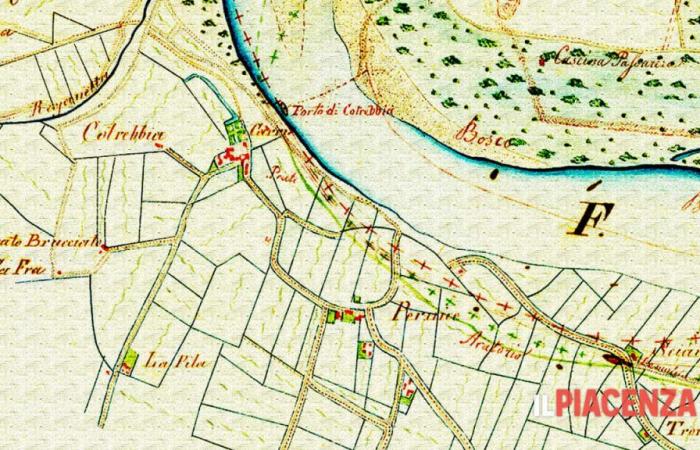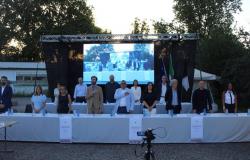As in the films of Don Camillo and Peppone, even on the Piacenza plain beyond the Trebbia river, on that 24 August 1308, the sun beat down “as hard as a boxer”, but the papal inquisitor didn’t care. In the affair of the Templars of Piacenza in 1308 with their capture and then the trial in Ravenna, in the list of seized assets we read of the domo “Ordinis Templariorum” posite “ultra Treviam” which are precisely twelve farms “circa duodecim mansa”. We then took the trouble to find these possible places on the most reliable ancient archive maps, which were nothing more than small farms (mansio) in the agricultural vicinity of old Cotrebbia. The inquisitor arrives “…in Episcopatu Placentie, in loco Cotrebie…” it is “Frater Guilelmus Januensis fratrum Ordinis Predicatorum Inquisitor heretice pravitatis” and writes in the report that twelve farms with lands were subjected there.
We will only deal with deciphering these locations, knowing full well that the original maps also give us other places investigated and requisitioned beyond the Po river and then others in Fiorenzuola d’Arda. Therefore, according to the topographic maps, “in loco Cotrebie” we can identify these small agricultural agglomerations in the surrounding area, which gave an economic income to the Piacenza Templars who had them worked by subordinate labourers.
Among these we undoubtedly include the localities “il Tempio di sotto”, a clear belonging to the Order already deducible in the name assigned, which is located beyond the Bonina hamlet while almost close to the Via Emilia Pavese there is “il Tempio di sopra”; then another location where a tower house still stands is “il Pernice” of very ancient foundation.
The ancient maps indicate the nearby locations “Cà dei Frati” therefore “Prato burnto” and “la Pila”; a notable trace is in the locality “Molino dei Frati”, in the “Reseghetto” and in the “i Ronchi” farmhouse. The last three farms that we can perhaps consider to be properties of the Templar mansion of Cotrebbia Vecchia are therefore “il Paradiso”, the “Preda” area and “Scovaloca” along the Po area just downstream towards the Puglia district of Calendasco.
A vast area between the Po, the Trebbia river and the current Via Emilia Pavese and in clear border with the feudal lands of Calendasco dei Confalonieri, soldiers of the city bishop. The inquisitor will then manage the revenues derived from these lands for a short period, leaving a detailed register of revenues, economic income and expenses for various expenses.
An important historical moment for Piacenza, which fortunately ended with full acquittal from the accusations of heresy for these Piacenza knights of the Temple. And if you read carefully between the lines of centuries-old papers and in the precise drawings of maps, something can still be brought to light.






